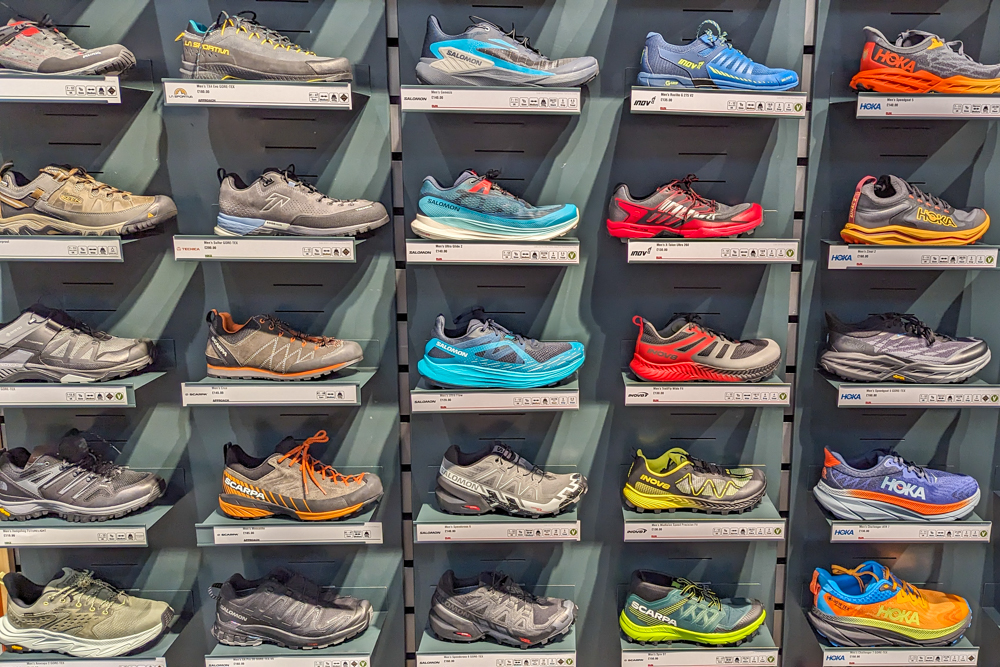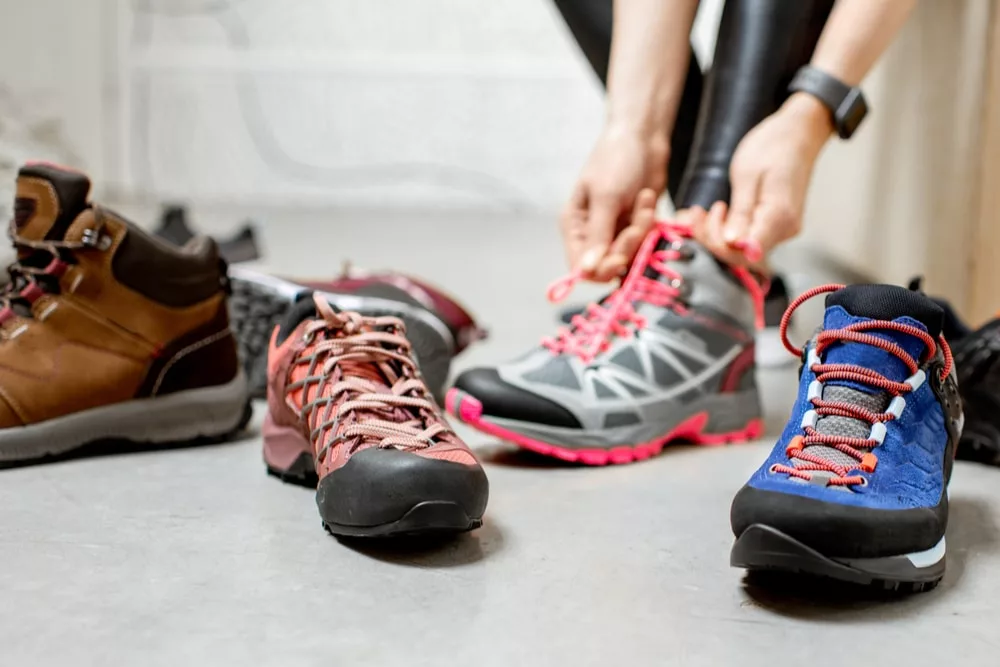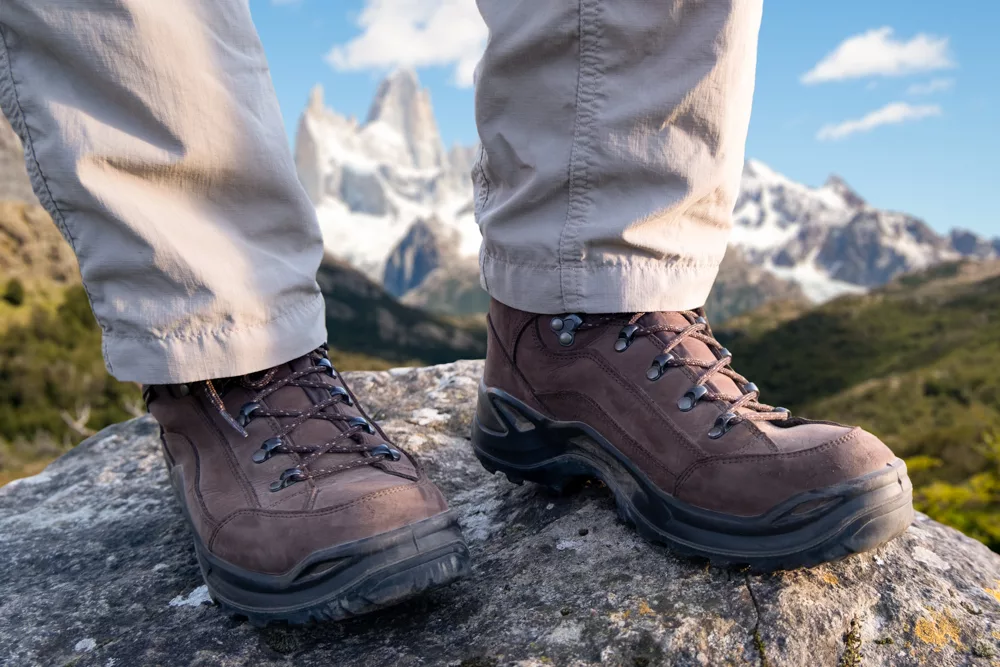Our information on how to decide on climbing boots will make sure you get pleasure from each step of the path. Right here’s decide the proper pair
Footwear is a hiker’s most crucial piece of drugs. Inappropriate or poorly fitted boots or footwear can spoil a day on the path and have you ever wincing with each step. However with a dizzying array of selections, from light-weight path trainers to double-layered plastic mountaineering boots and all the things in between, understanding the place to start out might be bewildering.
how to decide on climbing boots
To make the choice simpler, we’ve put collectively a newbie’s information on how to decide on climbing boots.
Know your necessities
Earlier than you take into account the next factors, take into consideration when and the place you can be climbing and what the situations and terrain will probably be like. If you happen to’re solely planning some dry climate day hikes, you’ll be able to most likely go for light-weight low-cut climbing footwear.
Nonetheless, in the event you’re planning some multi-day treks, then you definately’ll probably encounter a wider vary of path and climate situations and can wish to take into account some stronger mid-cut footwear or boots.

With one thing tougher like a high-altitude trek to Everest base camp and even an Aconcagua climb, you’re higher off with a water-proof leather-based or perhaps a double mountaineering boot. As a rule of thumb, the upper you go, the larger and extra sturdy your climbing boots needs to be.
Lastly, in the event you’re planning on doing lots of city strolling or indoor climbing on a treadmill then I like to recommend the WK400 strolling shoe from Eager, one among my favorite outside manufacturers. The shoe is particularly designed for city and treadmill strolling. It incorporates a curved sole and cushioned midsole that encourages ahead momentum.

Finally, you’re extra probably to decide on nicely in the event you analysis the anticipated path situations and terrain first.
Get your toes measured correctly
Once I acquired my newest pair of climbing footwear, I visited Ellis Brigham in Covent Backyard, London, to have my toes measured by the Sidas Feetbox machine. Feetbox maps and exactly measures your foot dimension and width, revealing weight distribution, stress factors and the place your toes may have further assist. The outcomes of the scan are despatched to you by e mail so that you can maintain sooner or later.

After getting my toes scanned, Des – the in-store fitter – additionally measured my toes manually to double-check the scale. After a fast chat about my necessities, he really helpful 4 mid-cut climbing footwear. After testing them for toe-shunting and heel-slipping on the in-store ‘path’, I finally opted for a pair of Merrell – a traditional, light-weight climbing shoe that match fantastically and are extraordinarily snug.
If doable, we suggest visiting an Ellis Brigham retailer to get your toes correctly measured so you understand precisely what kind of footwear you want. You may watch a video of my becoming on Instagram.
Ankle assist
You’ve got a alternative between low-, mid- and high-cut ankle assist. The upper the assist the extra roll resistance you’ll have in your ankles, but it surely comes with a trade-off: much less freedom of motion, heavier, extra inflexible materials and doubtlessly much less snug.
Low-cut climbing footwear (typically referred to as strategy footwear) permit your ankles to maneuver extra freely, however are much less inflexible and supply much less assist. Low-cut footwear have extra versatile midsoles, are lighter and are good for day climbing if you’re not carrying a heavy backpack. Nonetheless, some long-distance trekkers, particularly ultralight backpackers, desire low-cut and even trail-running footwear. Light-weight footwear assist to scale back fatigue however should not as sturdy.

Mid-cut footwear or boots are precisely as they sound and fall someplace between the 2, normally coming as much as your ankle bone. Mid-cut boots may be excellent for longer day hikes, throughout tougher terrain, or shorter backpacking journeys with lighter masses. They have a tendency to flex extra simply than high-cut boots however supply much less assist. I’ve a pair of Merrell Moab 3, an excellent snug mid-cut climbing boot that additionally manages to be light-weight, waterproof and supportive.

Excessive-cut boots will assist your ankles and are the most secure type of climbing footwear however are heavier and fewer versatile. They’re designed for hikers carrying heavier masses on multi-day journeys deep into the backcountry. They are going to be extra inflexible, sturdier and extra secure on uneven or technical terrain. They’re additionally extra sturdy so will last more. Nonetheless, they might make your toes hotter, sweatier and extra fatigued over longer distances.

Match
A very powerful factor is that climbing footwear suits nicely. It’s the distinction between blisters and bliss on the path. Mountain climbing footwear ought to match snugly in all places, however shouldn’t be tight wherever. Moreover, there needs to be sufficient room to wiggle your toes.

Once you’re selecting your climbing boots, strive them on with the socks you propose to put on on the finish of the day (as toes usually swell throughout the day and will probably be at their largest). Don’t be stunned if probably the most snug match is a bit greater than what you’d usually put on. My climbing boots are half a dimension greater than my regular footwear.
Lastly, when attempting in your climbing boots, take a superb stroll across the retailer and be sure to can bend your toes. Stroll up and down stairs and ideally a sloped floor too. Many outside shops have synthetic trails and even treadmills for purchasers to check footwear.
Waterproof
As I reside within the UK, the place rain is a chance all year long, I at all times go for leather-based climbing boots. Leather-based gives the best stage of water resistance and sturdiness. Nonetheless, it isn’t as gentle or breathable as artificial boots and requires longer to interrupt in.
My newest boots are a pair of Lowa Renegade, a preferred alternative right here within the UK as they’re comparatively light-weight and versatile and carry out nicely in British hillwalking situations. I even have a pair of strategy footwear which I take advantage of for day hikes after I know the climate’s going to be dry.
Flexibility
Until you’re recurrently happening multi-day treks, then you definately most likely need one thing fairly pliable. When Kia purchased her first pair of climbing boots, she was initially going to purchase one thing as heavy-duty as mine. She tried on some stiff leather-based boots at Cotswolds, believing that they have been the precise alternative.

Fortunately, Cotswolds is filled with specialists, one among which promptly identified that the boots have been too stiff for her petite toes. He prodded the tip, exhibiting her that she may barely bend her toes. After a chat about her meant use, he advised a extra light-weight pair of mid-cut Eager Terradora boots as an alternative, which have since proved excellent.
Select THE RIGHT SOCKS
Lastly, good climbing boots might be let down by unhealthy socks. Skinny or coach socks will probably rub, inflicting blisters and different discomforts.

It’s typically finest to keep away from cotton because it holds moisture subsequent to your pores and skin, which mixed with friction causes blisters. As a substitute, go for moisture-wicking cloth like polyester or wool socks similar to Smartwool.
Loved this publish? pin it for later…
Lead picture: Atlas & Boots

